Maybe this has happened to you, you try to cook pad thai, and the noodles are soggy and clumpy. Or you try to cook pad see ew using fresh rice noodles, and they end up broken into bits. Or at the Asian supermarket your eyes glaze over at all the noodle options because you have no idea what to choose. Sounds familiar?
In this post I’m going to give you everything you need to know about all the different kinds of rice noodles used in Thai cooking, including how to cook them properly so you'll have perfectly cooked noodles every time.
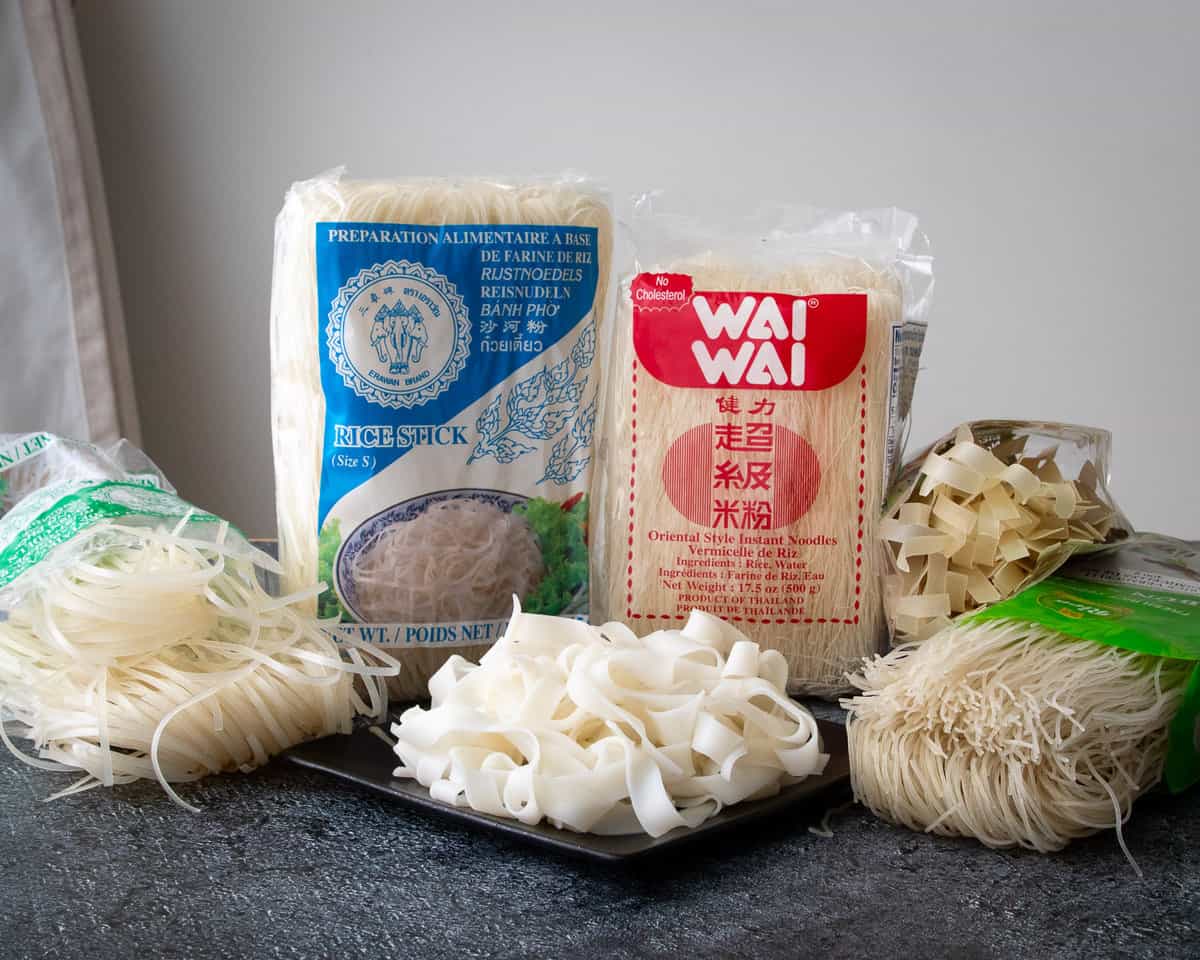
Jump to:
VIDEO: Rice Noodles Explained
Everything discussed in this article is covered in this explainer video below. It really helps to see in action how to properly cook rice noodles!
But first, what are rice noodles anyway?
When it comes to dried rice noodles, the various types are all made from the same two ingredients: rice flour and water. Fresh rice noodles, however, have other starches and additives mixed in to make them sturdier and last longer.
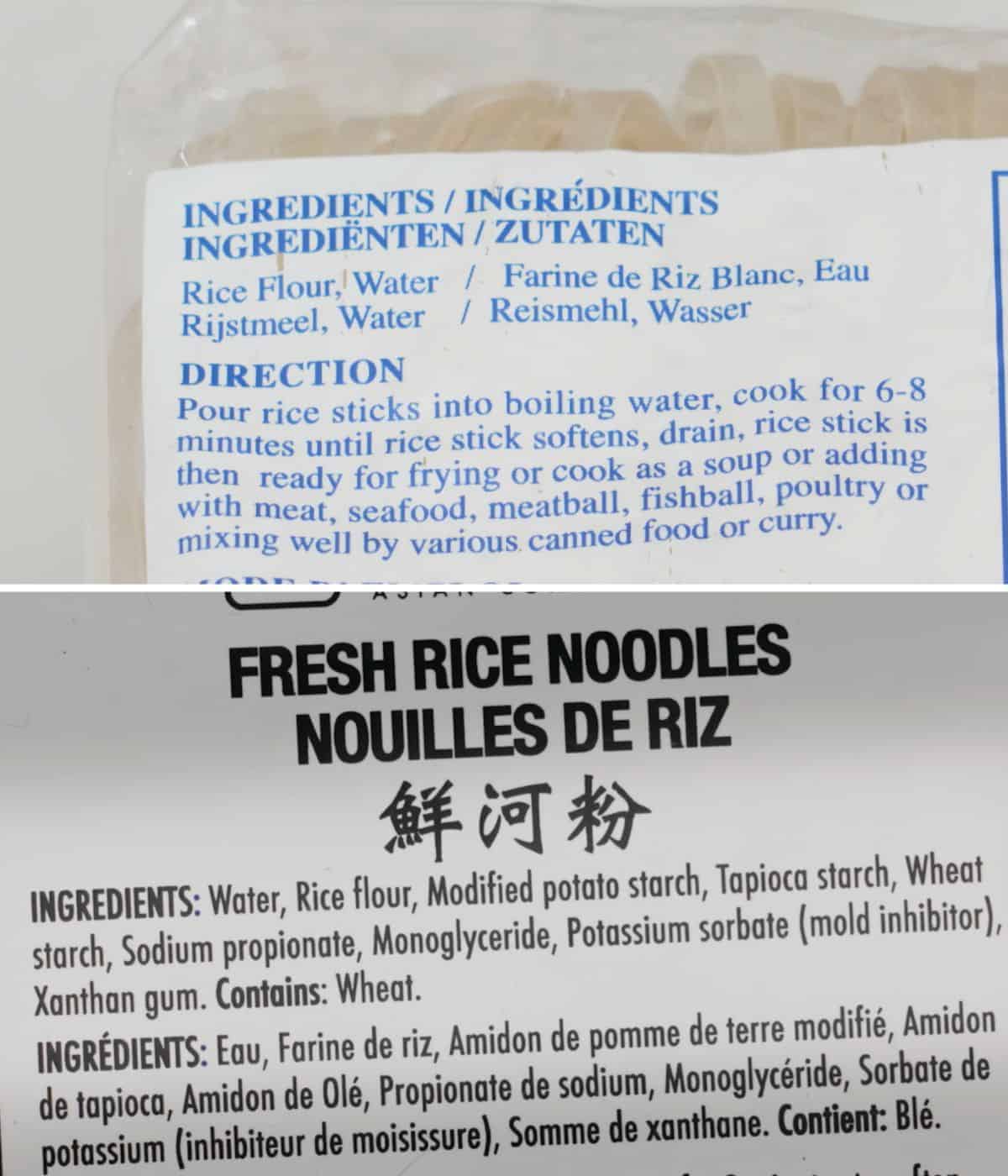
Unlike pasta or wheat noodles, rice noodles are gluten free and are not chewy. They are quite tender, which also makes them harder to work with because they can go from cooked to mush much more quickly. (Al dente is not a thing we aim for in rice noodles; that's just called undercooked 😂.)
Different Types of Rice Noodles:
Despite the many options at the store, rice noodles can be divided simply into two major categories: Fresh and dry.
Dry Rice Noodles
Dry rice noodles are made from ground up rice (a.k.a. rice flour) and water. The mixture can be steamed into a big sheet, dried, and cut into "rice sticks," or they can be extruded into round noodles. To see a Thai rice noodle factory in action, check out my short documentary here!
As there are different types of pasta, there different types of dry rice noodles:

- Thai Rice vermicelli or Sen Mee in Thai. These thread-thin rice noodles and are the smallest ones and they can be used in soups or stir fries, like this pad see ew vermicelli. These are not this is not to be confused with Vietnamese rice vermicelli which are very different and are discussed below.
- Size small (2 mm wide) or sen lek. These are my preference for Southeast Asian noodle soups such as Vietnamese pho and Thai boat noodles, but you can also stir fry them.

- Size medium (3 mm wide) is what we use as pad thai noodles and indeed in Thai we call them sen pad thai. They can also be used in noodle soups.
- Size large (4 mm wide) isn’t actually a size that exists in Thailand and so it might be for export only, but some people use these for pad thai. These are too large for noodle soups and I recommend using these only in stir fries.

- Size extra large (9 mm wide) or sen yai, which also doesn’t exist in Thailand in dried form because these are made to be a shelf stable version of fresh rice noodles (pictured at the bottom) that you associate with pad see ew, rad na, and drunken noodles. These are best used in stir fries.
- Vietnamese rice vermicelli or sen kanom jeen. Despite the similar name to the one above, it's an entirely different type of noodle. Vietnamese rice vermicelli are thick and round, similar to spaghetti. They are cooked by boiling in hot water just like pasta (timing varies depending on the size) then rinsed in cold water to remove excess starch. They are a little different in that they are not served hot but there are many things you can do with them! You can make a cold rice noodle salad, a healthy lettuce wrap, or make kanom jeen which is basically the Thai version of pasta!

*Glass noodles, bean threads, or cellophane noodles are often misunderstood to be a type of rice noodles. The Thai/Chinese ones are actually made from mung bean starch, and the Korean ones are made from sweet potato starch.
Fresh Rice Noodles
Fresh rice noodles are found in the refrigerated section at Asian grocery stores, usually next to all the tofu. There are two main types:
Cooked fresh rice noodles (ho fun)
These are the tender noodles with a slightly chewy texture that has gained a cult following for dishes like pad see ew. In Cantonese these are called “ho fun”. They are made mostly from rice flour but often have other starched such as tapioca starch mixed in.
This is a fresh, fully-cooked product that simply needs to be tossed with seasonings, meat and veggies. It's highly perishable which means they are usually made locally, so what you get from city to city is going to vary a lot in size and texture.
These can actually be made at home, check out my video tutorial for making your own fresh rice noodles!
Preparing Fresh Rice Noodles for Cooking:
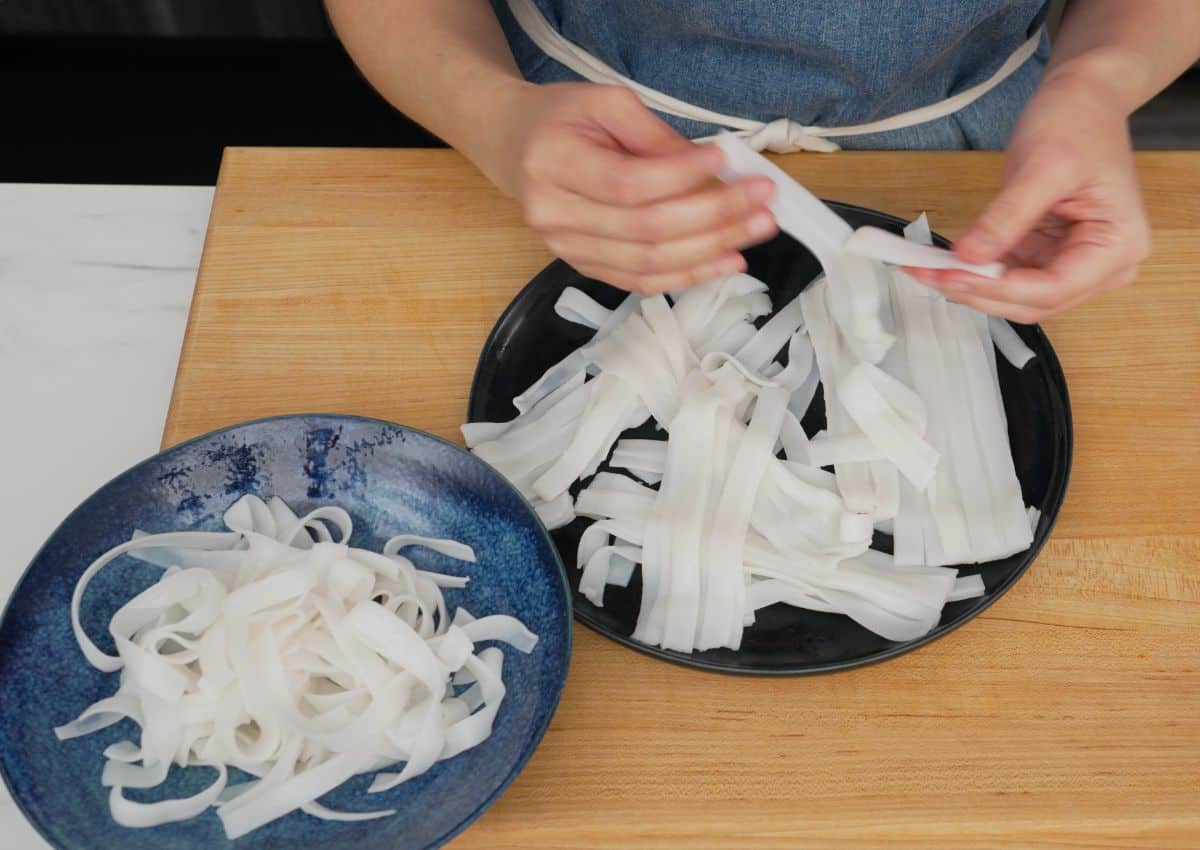
Before cooking them, you’ll want to peel apart the noodles. But cold noodles are often stuck together and are impossible to peel apart without breaking. If that's the case, separate them into chunks best you can, spread them out on a plate and microwave them for about a minute.
Take them out, see if any noodles are hot and soft enough to be peeled apart and peel them and set them aside. Return the hard noodles into the microwave for another minute, and repeat this until all the noodles can be separated. It usually takes me 3-4 minutes of microwaving for 1 lb of noodles.
Raw fresh rice noodles
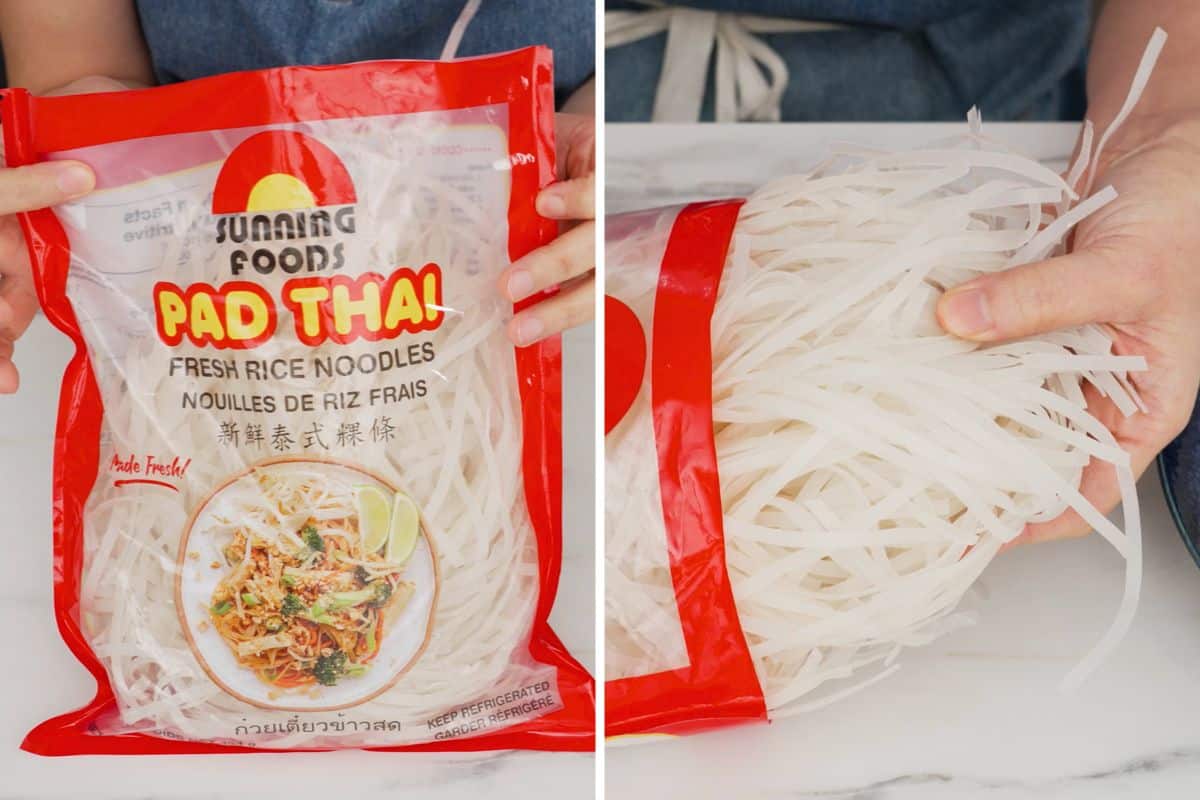
You may also see vacuum packed bags of rice noodles in the fridge that look very similar to the dried noodles. You can think of these as semi-dried version of the Small and Medium size dried noodles above. This type of noodles is what most restaurants use because they do not need to be rehydrated before using.
Choosing the Right Noodles for the Job
Best Noodles for Soups
For noodle soups you want to go small. Anything from the vermicelli to the medium size is fine. This is because rice noodles have no flavour whatsoever, so all the flavour will comes from the broth. With small noodles there’s a lot of surface area for the broth to cling to. If you go too big, in each mouthful it’s going to feel like too much bland noodles and not enough broth flavour.
Fresh wide noodles (ho fun noodles) are the exception because fresh noodles are more tender and are less dense than the dried version, they can work fine in soups IF they’re not made too thick.
In Thailand, we actually have two types of fresh wide noodles: One for soups, which is thinner and more delicate, and one for stir fries, which are thicker and sturdier so they’re less likely to break in the wok!
Best Rice Noodles for Stir Frying
The good news is that any of these are good for stir fries and it really comes down to your preference for which type of texture.
Save this recipe!
How to cook rice noodles without making them soggy, clumpy, or broken.
Cooking rice noodles is not actually hard, but most people misunderstand how they need to be treated.The #1 reason why your rice noodle stir fries are a soggy mess is that you’re cooking them before cooking them.
What I mean is that people often boil the noodles and cook them to perfection, and THEN they put them into the pan. But when you stir fry, there is a lot of liquid that comes from sauce, the meat, and the veggies. It doesn’t take much for rice noodles to over cook, so if they go into the pan already cooked, then they’ll very likely end up overcooked by the end.
Note that this isn’t an issue with egg noodles because they don’t overcook nearly as quickly, and in fact, you want egg noodles to be fully cooked before you stir fry them.
1. Do not boil dried noodles. Soak them.
All dried noodles simply need to be soaked until fully rehydrated before being stir fried or blanched for noodle soups.
The reason we want to soak rather than boil is because rice noodles overcook very easily. Soaking allows the noodles to hydrate evenly, and then the heat from the pan is cooking the noodles using the water that’s already IN the noodles. This results in even cooking inside out, and a very low chance of over cooking.
Soak them in room temperature water using the following timing as a guide, keeping in mind that they vary between brands.
- Rice vermicelli: 5-15 minutes, depending on the brand. Wai wai brand is smaller and takes only 5 minutes, Erawant takes up to 15 minutes.
- Small size: 20-30 minutes.
- Medium size: 50-60 minutes
- Large size: 90 minutes to 2 hours
- The XL size is a bit of an exception because they’re usually used as a substitute for fresh rice noodles: use hot off the boil water and soak them for 15 mins, then drain and rinse under cold water. These are gonna be partially cooked by this point, and are ready to go into the pan.
How do You Know When Noodles Have Soaked Enough?
Pick the noodles up and they should droop completely, not resisting gravity. If they’re still trying to hold their original shape, they’re not ready.

2. For stir fries, add soaked noodles directly into the pan.
Once soaked, noodles are ready to go into the pan. Generally they will need a little extra liquid, but how much depends on how much liquid is already in the sauce, how crowded your pan is, how high your heat is, etc.
So I recommend following a trusted recipe amounts before winging it so you add the right amount of liquid for the dish. And when in doubt, add less water, then taste and add more as needed.
3. Push, flip and toss. Don't stir.
Noodles break because your spatula cut them into bits while you're stirring. Once you add noodles into the pan, especially delicate fresh cooked rice noodles, don't use a spatula and haphazardly stir them which can cause the edge of the spatula to cut the noodles. Use a flipping motion or push the noodles from the edges inward. Watch my video demo to see this technique in action!
4. Use a wooden spatula.
Metal wok spatulas are like blades to these noodles, and they can easily chop your noodles without you realizing it!
5. Use a nonstick pan or a well-seasoned wok.
Whatever pan of your choice, the surface should be nonstick because rice noodles, especially fresh ones, are notorious for sticking. And if you’re having to scrape them off, that’s one sure way to get broken noodles.
6. Don’t crowd the pan
Crowding the pan is all sorts of bad news, but when it comes to noodles, this is likely the most common reason people end up with soggy and mushy noodles. Crowding traps moisture, and this moisture steams the noodles and you're basically boiling them, which causes the noodles to overcook. Overcooked noodles are too soft...too soft noodles break into bits.
This is why I stress so much that you should only cook pad thai in batches of 2 servings, and the most delicate fresh noodles should be cooked ONE portion at a time. There is a reason why street vendors cook them one order at a time!
On a related note, you should always use high heat when stir frying noodles to maximize liquid evaporation and prevent excess moisture in the pan.
7. For soups, blanch soaked noodles for just a few seconds
While stir fried noodles get a little extra liquid from the stir fry sauce, noodles for soups are going to be sitting in a bowl of hot broth. This means that they should go into the bowls still a little al dente, and the heat of the broth will cook them through.
To get al dente noodles, blanch them in boiling water for just a few seconds: rice vermicelli noodles take 3 seconds, size small take 5 seconds, and size medium take 8 seconds. Cooking time will vary between brands.
Pro Tips
#1: Emergency Noodle Soak
I use room temperature water as a default because it takes so long for them to over soak that I don’t even have to set a timer. But if you're short on time, warm water will make the soaking go faster. However, the warmer the water, the faster they over-soak, which results in too-soft noodles, so check them often.
If you totally forgot to soak but need the noodles NOW, there is an emergency solution. Use hot water, and I mean off-the-boil, and soak the large size for 4 minutes, the medium size for 3 minutes, and the small size for 2, and immediately drain and rinse them in cold water to stop the cooking. I wouldn’t risk this method with the vermicelli, but they don’t take long anyway.
#2: Do not trust package instructions on Asian products.
Not saying they’re always wrong, but they often are. The package instructions on Erawan brand noodles for sizes S, M and L all tell you to boil them for 6-8 minutes. You can probably guess that different sizes of noodles should not have the same cooking time! And I’ve seen many other Asian products with instructions that just don’t work, so I never assume they’re right.
#3: Soak noodles in advance
If you can plan ahead, soak the noodles, drain them, and keep them in an airtight container in the fridge. Make sure there is no pooling water in the container which will over soak the noodles at the bottom. I recommend putting them on a tea towel before storing them to dab off excess water. Soaked noodles will last in the fridge for up to 1 week.
Some Rice Noodle Recipes to Try
Now that you know everything there is to know about rice noodles, you're ready to get cooking! Try one of these popular classics!

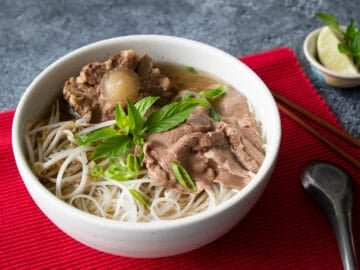
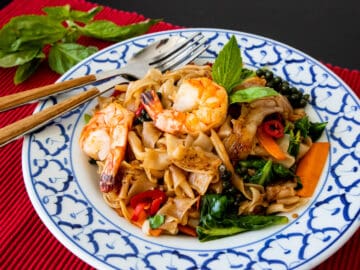
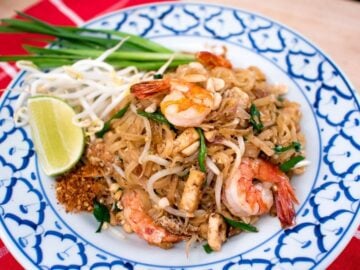
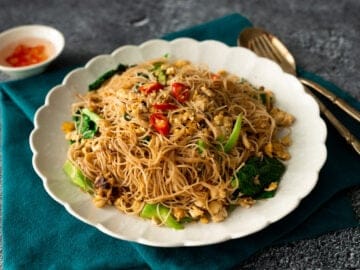
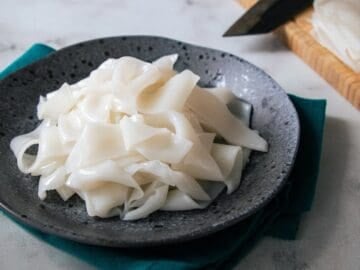

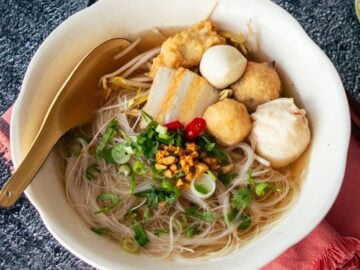

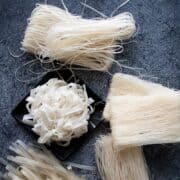
Owen B says
Great tips - this method worked great for me with thick rice noodles and pad see ew - ended up with the most al dente noodles of all the methods I've tried so far, and the noodles held together perfectly through the cooking process so I'm sticking with the room temp soak method from now on. thank you!
Evelina says
This is really helpful, thank you!
And on the note of not trusting the cooking directions, it made me think of how all the instant noodles that do not come in a cup where I live (Sweden) says to boil the instant noodles for 4-6 minutes... 🙄 I never boil them, I just put them in a bowl and soak as you would a cup noodle. 😂
C says
Dear Palin,
Thank you so much! I used the room temperature soak on some medium-wide noodles for quite some hours and it did not affect them adversely during cooking in this recipe -- https://www.recipetineats.com/thai-stir-fried-noodles-pad-see-ew/. So brilliant! in doing so, the noodles were just cooked, springy, and absorbed the sauce and carmelized just as you said, in no time at all. Bec/ I lacked ingredients, my pad see ew had onions, mushrooms, and leftover rotisserie chicken.
I'll definitely be using this method again, esp for Thai noodles 🙂
Sara says
Just came back from Bangkok where I took a cooking class. These are the detailed instructions I needed to correctly prepare rice noodles for Pad Thai (they did this for us in advance and just said “soak them”). Also appreciate the “small batch” tip. Thank you!
C says
Just wanted to say that I am grateful for your work and that you are awesome at explaining things in a clear and concise way . I have appreciated your guidance regarding a number of different aspects of Thai cooking basics . Thanks for covering everything I might need to know to navigate this cuisine .
Tara says
I'm wondering if there's a way to fix noodles that have already been cooked and are too rubbery or chewy?
BZ says
If rice noodles are too chewy, then they haven't been cooked enough (and they need a bit more liquid! - but probably not TOO much more....) so just throw them back in a pan on high with some liquid (water or chicken broth) and heat them through - that should be enough.
Mary M. says
Hi, Just discovered your link. I never 'follow' anyone but am intrigued with your recipes and suggestions. Thanks! I love (what I call) glass noodles and will look through your site for vermicelli salads (with fresh ginger, scallions, sesame oil, etc.)
Bron says
Thank you for these fantastic noodle cooking tips. It explains why my stir frys ended up with soggy noodles torn to shreds!
Barbara Hallett Wegner says
Thank you this was so informative.
Martha says
I am 77 and been cooking noodles for past 20 years.......many mishaps in both purchasing , relying on Asian instruction, and epic clumping failures. Thank you for this great tutorial. I will certainly follow you!!! I also love the fish sauce tutorial. Thank you!!!
Christina says
Wonderful! Thank you! I love rice noodles but everytime I cook them (package instructions) they are mush. I will give this a try!
thai-food-novice says
Is there any way to fix or save a rice noodle dish if you used dry noodles but they weren't as hydrated as they should have been??
Fruma says
I have a question If I make a cold rice noodle salad with vegetables, can I serve it the next day..I did this some time ago and the result wasn't good. The noodles were starchy? Somehow the salad didn't make it through the night.
Pailin Chongchitnant says
No you cannot serve refrigerated rice noodles, sadly, the texture becomes hard and brittle.
Kathy Clancy says
Fantastic video! Thank you so much. I made some extremely clumpy gross rice noodles last week and now feel confident I can rock my next batch!
Pailin Chongchitnant says
Amazing! Can I ask where you think you went wrong with the clumpy batch? Just trying to gather info about common mistakes 🙂 Thanks!
Forest says
I found fresh rice noodles from Hmart. I microwave them just as you say but they just seem to turn out mushy and fall apart after cooking. How do thai restaurants get them perfectly chewy every time? I don’t overcook. Could it be the brand? Bahn Mong rice paper. I’m trying to perfect drunken noodle.
Pailin Chongchitnant says
So Banh Mong rice paper is actually not the right ingredient, they're Vietnamese rice paper meant for making rolls, not meant for stir fry, which is probably why you're having problems with it. Thai restaurants usually get supplies of fresh rice noodles from vendors that are made fresh daily, which are much easier to work with than what we buy from stores.
Leticia Chand says
Hello,
When using rice vermicelli (Erawan) for soups, do we need to soak for 15 minutes in room temperature water and also blanch in boiling water for 3 seconds? Do we need to do both?
Thank you.
Pailin Chongchitnant says
Yes you do need to blanch them. Then place them in serving bowls and pour the soup over them.
Karen Macca says
You rock! Thank you so much for making this video…I have gotten so frustrated with making rice noodles I no longer even bother and buy a packaged Pad Thai for when I’m craving it, thanks to you I can attemp to make the meal from scratch which I prefer (do not live near why Thai restaurants🥹). I will look for more soon!!!
Chesteremere Pizza says
I tried these cooking methods for rice noodles, and they turned out fantastic! It's great to have simple yet effective techniques to ensure delicious results every time.
anna says
Thank you so much for taking the time to make this video. All this info in one spot!
JM says
omg, this explains so much about my sad Pad Thai. Thank you for your content, it's so incredibly helpful.